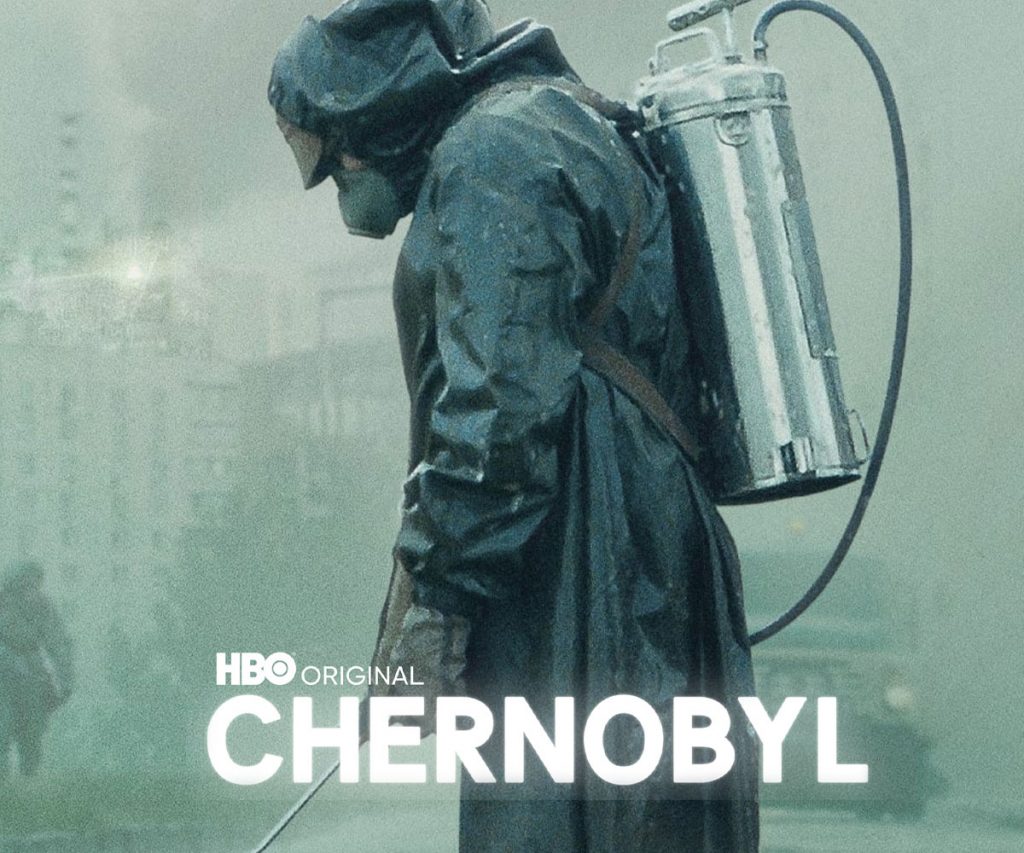I watched Chernobyl twice when it came out and a third time to write this review.
I lived through the Cold War and years of the threat of mutually assured destruction (MAD). Nuclear weapons were the world-ending threat I grew up fearing. And then a nuclear power station had a meltdown. I lived through Chernobyl, watching the news broadcasts on SABC with my family. I was 15.
As much as the Cold War threatened a Soviet nuclear attack, such an invasion never came to pass. But ultimately, Russian nuclear weapons crept across the border into Europe, through the Chernobyl accident. It is the worst nuclear accident and the most expensive disaster in history.
This TV show brilliantly represents the complex political problems of the erstwhile Soviet Union and how its corrupted systems meant nationalist pride trumped safety or honest communication. Some historians think the Soviet Union’s eventual collapse can be traced back to the Chernobyl disaster, which laid bare how incompetent, inefficient and corrupt Russian society had become.
Chernobyl was meant to be an icon of the Socialist Revolution. Pripyat was a brand-new town, right next to a brand-new nuclear power station. It was meant to signify all of the good things the then Soviet government wanted to epitomise about its revolutionary new political order.
But, as much as the design of the reactor was fatally flawed, so too was the design of the Soviet Union itself fatally flawed. One of the biggest problems, which would be discovered after the eventual collapse, was how much officials lied to each other.
Instead of communicating what was really going on, apparatchiks also communicated the bare minimum to their superiors to avoid consequences for not doing their jobs properly. When grain harvests or factory quotas didn’t meet the targets, those officials lied to their bosses, who in turn lied to their bosses.
Chernobyl was the ultimate example of this. Nobody told their boss how bad the problem was, or how much of the sh1t had hit the fan. (My parents always used to say it as sh1t, a generation before 1337 g33ks would substitute numbers for letters).
The TV series is a faithful reproduction of this madness. The protagonist in the series, scientist Valery Legasov (played by the brilliant Jared Harris), is himself as much a victim as all the other characters we see who try to save an unsavable situation.
Choosing to volunteer to close a valve in a radioactive section of the reactor is as fateful a decision as just being on site. Many of those people there, including hundreds of volunteers, would later die of radiation-related illnesses. Legasov, a nuclear scientist, was well aware of this and tells political flunky Boris Shcherbina (the always excellent Stellan Skarsgård) that their lives are essentially over having been exposed to such massive radiation.
Watch Chernobyl on Showmax for R19/week – click here to learn more
When Harris delivers this warning with its implacable certainty, it makes the words of this scientist that much more profound. He will also die. But they also remind us, the viewer, that we are fragile human beings when it comes to such potent weapons as radioactivity.
To illustrate this, the everyman character is a young woman (Jessie Buckley) whose husband is one of the first firefighters to respond, and who dies a hideous death from radiation within three months.
To show the reaction of Europe’s scientific community, many of whom detected increased radiation and started warning nuclear watchdogs, Emily Watson plays a concerned scientist who tries to unravel the mystery. Even though the subject matter is ghastly, and all the main characters died of radiation, there is something uplifting and hopeful about Chernobyl – the TV series as much as the place itself. Many people sacrificed their lives for other people (the true numbers have always been obfuscated by the Soviet officials) and ultimately to save the lives of many more.
Meanwhile, as documentary filmmaker Holly Morris discovered, life and nature thrive in the strangest of places. Some 200 people went back to live in the 10km exclusion zone around the now concrete-enclosed reactor (a billion-euro dome structure paid for by the European Union). Why, she asks and explains in this wonderful TED Global talk, “because it’s home”.
If you want to explore more on the subject, watch the excellent Chernobyl: The Lost Tapes documentary on Showmax.




